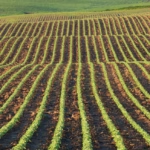Cherries are a delightful and flavorful fruit that can be grown successfully in certain regions of South Africa. If you’re considering growing cherries in your garden or orchard, it’s important to be aware of some key factors to ensure successful cultivation. Here are ten things you should know before embarking on cherry cultivation in South Africa:
- Suitable Climate: Cherries thrive in areas with a distinct winter chill and a moderate summer. They require a specific number of hours of winter chilling to break dormancy and set fruit. Regions with cool winters and mild summers, such as the Western Cape and parts of the Eastern Cape, are ideal for cherry cultivation.
- Varieties: There are various cherry varieties available, each with its own characteristics, flavors, and requirements. Choose varieties that are known to perform well in your specific climate and growing conditions. Popular cherry varieties grown in South Africa include Bing, Stella, Lapins, and Van.
- Pollination: Most cherry varieties require cross-pollination for fruit set. This means you need to plant two or more compatible cherry varieties within close proximity to ensure proper pollination. Be sure to select varieties that bloom at the same time to facilitate pollination.
- Soil Requirements: Cherries prefer well-drained soils that are rich in organic matter. The soil should have a pH level between 6.0 and 7.0. Conduct a soil test to determine its fertility and make any necessary amendments before planting.
- Site Selection: Choose a sunny location for your cherry trees to receive at least 6-8 hours of direct sunlight each day. Ensure that the site is protected from strong winds, which can damage the delicate cherry blossoms and affect fruit development.
- Planting: Plant cherry trees during the dormant season, usually in winter. Dig a hole wide and deep enough to accommodate the root system of the tree. Gently spread out the roots and backfill the hole with soil, ensuring the tree is planted at the same depth as it was in the nursery.
- Watering: Cherries require regular watering to maintain adequate soil moisture, especially during dry spells or hot summer months. Provide deep, thorough waterings to ensure the root zone is well-hydrated. However, avoid overwatering, as cherries are susceptible to root rot.
- Pruning and Training: Proper pruning and training are essential for cherry tree health and fruit production. Prune your cherry trees during the dormant season to remove dead or diseased branches, improve airflow, and shape the tree. Training the tree to an open center or modified central leader system helps optimize light penetration and fruit development.
- Pest and Disease Management: Cherries are vulnerable to various pests and diseases, including birds, aphids, fruit flies, and fungal infections. Implement proper pest and disease management strategies such as netting to protect against birds and using organic insecticides when necessary. Regularly inspect your trees for signs of pest or disease infestation.
- Harvesting: Cherries are typically ready for harvest in late spring or early summer, depending on the variety and climate. Harvest the cherries when they are fully ripe but still firm. Be gentle when picking to avoid damaging the fruit. Harvest cherries in the morning or evening when temperatures are cooler to maintain fruit quality.
By considering these ten important factors before growing cherries in South Africa, you’ll be better prepared to embark on your cherry cultivation journey. Cherish the beauty of cherry blossoms and relish the delicious flavor of fresh, homegrown cherries when they grace your table.
Image by wirestock on Freepik







